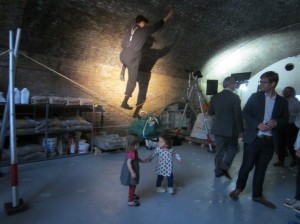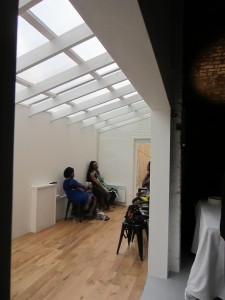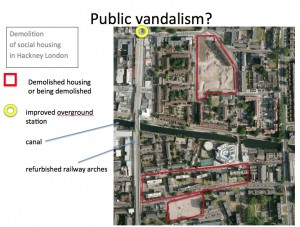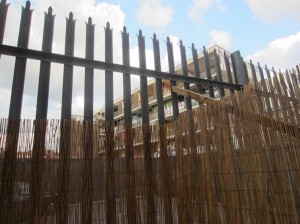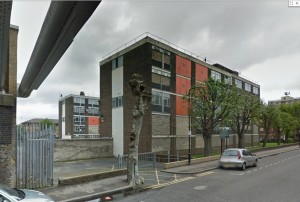OC 60: Creative Spaces for Creation
Footholder value creation
A space under East London railway arches has become a hands-on workspace of an international avant-garde landscape architecture practice. http://www.vogt-la.com/en
Ten minutes walk from the main office situated in the sphere of influence of London’s silicon roundabout this space is designed to experiment with the transformation of urban landscapes into spaces fit for the 21st century.
Contributing much in kind as in cash, the professional team of landscape designers refurbished the run down arches, restored the brickwork, put light into the access front and built a small, bright extension between the back wall and the edge of the railway site, separated by a high fence from the surrounding housing estates.
A classic example of micro-regeneration
Instead of embracing this enthusiastic, caring and competent undertaking of bringing empty arches into creative use, the land-owners put obstacles in the way, corroborated by development control. In times of austerity when everybody is crying out for jobs, such innovative undertakings should be welcome.
Obfuscation
The local authority seems to prefer large scale urban renewal, consisting of displacement and destruction to make room for new gated premises in the hope to attract affluent colonisers into this traditionally poor working class area.
The argument that such displacement is necessary to rebalance the social mix of this area has never been advanced the other way round in rich quarters of West London. No doubt, another society resides there, not subjected to the same egalitarian arguments.
Reaping benefits?
This cheek by jowl urban transformation constitutes a microcosm of urban change with all its contradictions.
Why should small entrepreneurs not be encouraged to invest their time, knowledge and money in converting a property they do not even own into a space where the local economy can develop?
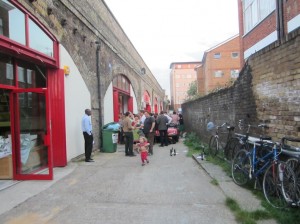
6_dia front of the new workshop alongside refurbishments of railway arches by other footholders, photo Judith Ryse
Why should the land owner reap all the added value generated by the users of the space? By granting a short lease, the owners can increase the rent at will, end the lease and take over the premises with its increased value without compensation. They alone are reaping the positive impacts which those who refurbished and occupied these arches were spreading to the wider surroundings, reflected in increased property and land values. Without such footholders, in this case belonging to the most dynamic part of the innovative economy, these properties would have remained idle and derelict. Why should those who have invested themselves into this positive physical change not be able to obtain their rightful share of the value they have contributed to the process of urban regeneration?
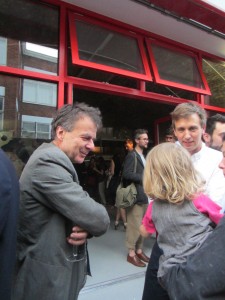
7_dia Façade of workshop with Christian Vogt, director of the landscape architect studio, photo Judith Ryser
Gap between poor and rich
What has changed since Marx wrote about the unequal conditions of those who contribute their labour and those who invest their capital, if anything? Although our societies are richer and live longer overall, the gap between those at the top and the bottom has widened and is increasing at an accelerated rate.
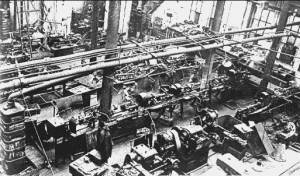
8_dia gap between poor and rich, source:
http://blogs.telegraph.co.uk/news/danhodges/100189123/in-america-and-in-britain-tax-cuts-for-the-rich-are-killing-the-right/
Economists are discussing the distinction between market and capital, between exchange, investment and accumulation with politicians. (e.g. http://www.demos.co.uk/events/making-markets-moral ). What they omit is that labour is creating value and surplus value in the process of production and is often not attributed its fair share. It seems that even when those who contribute their labour are highly educated and self employed this inequality remains a case in point here.
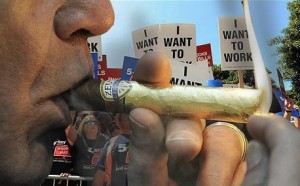
9_dia gap between poor and rich, source:
http://blogs.telegraph.co.uk/news/danhodges/100189123/in-america-and-in-britain-tax-cuts-for-the-rich-are-killing-the-right/

